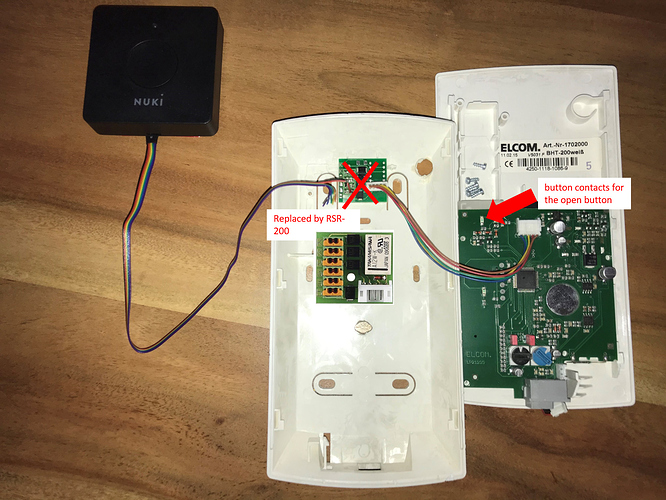Hi Tobias ,
thanks for your hint regarding BFT-200 connection. I am using the BHT-200 which should have the same hardware setup :).
If I understood you correctly you did the following:
- you replaced the original board from the BFT-200 with the RSR-200, everything else is connected as original
- Then you connected the Nuki Opener to the utton contacts for the open button from the BFT-200
Could you please share which cable colors of the Nuki Opener were connected to the RSR-200 (red/black?) and to the opener buttons (blue?)?
Thanks so much in advance.
Sincerely,
